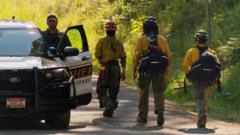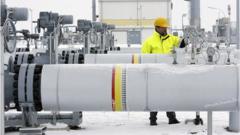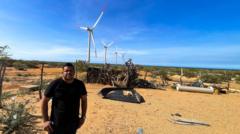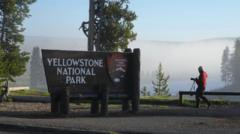Nearly 500 buildings in Boise are heated using a geothermal system that taps into the earth's natural hot water, making the city a leader in renewable energy.
Harnessing Nature's Heat: Boise's Geothermal Revolution

Harnessing Nature's Heat: Boise's Geothermal Revolution
Boise, Idaho, utilizes geothermal energy for heating, representing a pioneering move in municipal resource management.
The city of Boise, Idaho, is making headlines for its innovative approach to renewable energy through the use of geothermal heating. With almost 500 buildings, including businesses, government facilities, and several educational institutions, relying on this sustainable energy source, Boise is showcasing a model for other municipalities to follow.
By harnessing the earth's natural geothermal heat, Boise has established the nation's largest municipally operated geothermal system. One standout feature is the Idaho Statehouse, which uniquely employs geothermal energy for its heating needs, making it the only state capitol in the U.S. to do so. This system not only warms buildings but also extends to sidewalks, preventing snow accumulation during winter.
Geothermal heating works due to the presence of fault lines in the area that bring groundwater into contact with hot subterranean rocks, raising its temperature to approximately 170 degrees Fahrenheit (77 degrees Celsius). The process involves drawing warm water from aquifers, circulating it through a network of pipes, and subsequently returning it to the ground to be reheated, promoting sustainability and reducing reliance on fossil fuels.
Boise's commitment to leveraging the natural resources available in its region is a prime example of how local solutions can address environmental challenges while offering reliable and clean energy alternatives. The city's geothermal system is not just an energy source; it's a step toward a more sustainable future for communities across the nation.
By harnessing the earth's natural geothermal heat, Boise has established the nation's largest municipally operated geothermal system. One standout feature is the Idaho Statehouse, which uniquely employs geothermal energy for its heating needs, making it the only state capitol in the U.S. to do so. This system not only warms buildings but also extends to sidewalks, preventing snow accumulation during winter.
Geothermal heating works due to the presence of fault lines in the area that bring groundwater into contact with hot subterranean rocks, raising its temperature to approximately 170 degrees Fahrenheit (77 degrees Celsius). The process involves drawing warm water from aquifers, circulating it through a network of pipes, and subsequently returning it to the ground to be reheated, promoting sustainability and reducing reliance on fossil fuels.
Boise's commitment to leveraging the natural resources available in its region is a prime example of how local solutions can address environmental challenges while offering reliable and clean energy alternatives. The city's geothermal system is not just an energy source; it's a step toward a more sustainable future for communities across the nation.




















